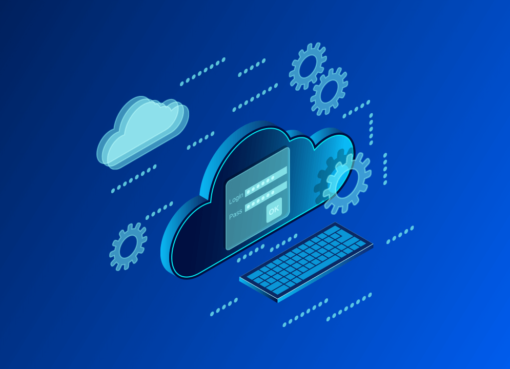How Is Cloud Computing Shaping the Future of Technology and Innovation?

Cloud computing has evolved from a mere technological trend to a foundational pillar that is transforming industries, businesses, and everyday life. As companies and individuals increasingly rely on cloud services, this technology is shaping the future of innovation, driving efficiency, scalability, and new opportunities in almost every sector. But how exactly is cloud computing influencing the future of technology and innovation?
In this article, we’ll explore how cloud computing is shaping the future, its role in driving technological advancement, and the opportunities it creates for businesses, developers, and consumers alike.
1. What Is Cloud Computing?
Cloud computing refers to the delivery of computing services over the internet, allowing users to access and use software, data, and computing resources from anywhere in the world. Instead of maintaining physical servers or data centers, businesses and individuals can rent these resources from a cloud service provider like Amazon Web Services (AWS), Microsoft Azure, or Google Cloud.
There are three primary types of cloud computing services:
- Infrastructure as a Service (IaaS): Provides virtualized computing resources over the internet, such as storage and processing power.
- Platform as a Service (PaaS): Provides a platform for developers to build, test, and deploy applications without managing the underlying hardware or software layers.
- Software as a Service (SaaS): Provides access to software applications over the internet, eliminating the need for local installation or maintenance.
Cloud computing has changed the way companies operate by offering cost-effective, flexible, and scalable solutions that drive innovation across industries.
2. How Cloud Computing Fuels Innovation
Cloud computing is a key enabler of innovation, offering businesses and developers the ability to create new products, services, and business models with unprecedented speed and flexibility. Here’s how it’s driving technological advancements:
2.1 Enabling Faster Development and Deployment
Cloud computing has revolutionized the development and deployment of applications by offering developers the tools and infrastructure to quickly build, test, and launch products. Platforms like PaaS and SaaS provide pre-built environments where developers can focus on creating and optimizing software rather than worrying about underlying infrastructure. This accelerates the time-to-market for new products and services.
Additionally, cloud platforms provide scalable resources, allowing businesses to handle spikes in demand or scale down during slower periods. This ensures that companies can meet customer needs without over-investing in physical infrastructure.
2.2 Supporting Big Data and Analytics
The cloud has played a pivotal role in making big data and analytics more accessible to businesses of all sizes. Cloud-based tools allow companies to store, manage, and analyze vast amounts of data without investing in costly infrastructure. By leveraging cloud analytics platforms, businesses can gain insights into customer behavior, market trends, and operational efficiency.
Moreover, the cloud supports real-time data processing, allowing businesses to make decisions faster and respond to changes in the market with greater agility.
2.3 Fostering Collaboration and Remote Work
Cloud computing has made collaboration easier than ever, allowing teams to work together seamlessly regardless of geographic location. Tools like Google Workspace, Microsoft 365, and Slack enable real-time document sharing, communication, and collaboration, making it easier for teams to work together on projects in a cloud-based environment.
This shift has become particularly relevant in the context of remote work. Cloud computing has empowered businesses to adapt to remote and hybrid work models, providing employees with the tools they need to stay connected, productive, and efficient. As a result, organizations can tap into a global talent pool and encourage flexible work arrangements, driving innovation in ways that were not possible with traditional office settings.
3. Cloud Computing and Technological Advancements
The transformative power of cloud computing is accelerating technological advancements in a variety of areas. Let’s take a look at some of the key technologies that are being shaped by cloud computing.
3.1 Artificial Intelligence and Machine Learning
Cloud computing is playing a central role in the rise of artificial intelligence (AI) and machine learning (ML). By providing on-demand computing power, cloud services allow organizations to process vast amounts of data and train complex machine learning models without the need for expensive hardware. Cloud platforms like AWS, Google Cloud, and Azure offer ML tools, frameworks, and APIs that allow businesses to implement AI solutions quickly and cost-effectively.
This democratization of AI technology enables companies to leverage AI for tasks such as predictive analytics, customer service automation, fraud detection, and personalized recommendations. For startups and smaller businesses, cloud-based AI tools level the playing field by providing access to advanced capabilities that were once only available to large enterprises.
3.2 Internet of Things (IoT)
The Internet of Things (IoT) refers to the network of interconnected devices that communicate and share data with each other over the internet. Cloud computing is vital for managing and analyzing the vast amounts of data generated by IoT devices. IoT systems require scalable and flexible infrastructure, which the cloud provides.
By leveraging the cloud, businesses can gather data from millions of connected devices, process it in real-time, and gain valuable insights into everything from consumer behavior to machine performance. This capability enables innovations across industries such as healthcare (e.g., wearable devices), agriculture (e.g., smart farming), and manufacturing (e.g., predictive maintenance).
3.3 Blockchain Technology
Blockchain, the technology behind cryptocurrencies like Bitcoin, is another area that has been significantly impacted by cloud computing. Cloud platforms provide the infrastructure required to develop, deploy, and scale blockchain applications. In addition to cryptocurrencies, blockchain has applications in supply chain management, identity verification, and smart contracts.
The decentralized nature of blockchain combined with the scalability and security of cloud computing opens up new possibilities for businesses to create transparent, tamper-proof systems that can revolutionize various industries, from finance to healthcare.
3.4 Edge Computing
Edge computing is a distributed computing paradigm that brings computation and data storage closer to the location where it’s needed—such as devices or sensors—rather than relying on a centralized cloud data center. Cloud computing plays an important role in supporting edge computing by providing the infrastructure needed to store and process data generated by edge devices.
As the number of connected devices increases, edge computing is essential for reducing latency, improving real-time processing, and enabling faster decision-making. With cloud infrastructure, edge computing becomes more scalable, allowing businesses to handle the growing complexity and volume of data from IoT devices.
4. Business Benefits of Cloud Computing
Cloud computing offers numerous advantages to businesses across industries, including cost savings, scalability, and the ability to innovate more rapidly. Here are some key benefits:
4.1 Cost Savings
Traditionally, businesses had to invest heavily in physical infrastructure—servers, storage devices, and networking equipment. With cloud computing, businesses can rent the resources they need on a pay-as-you-go basis. This drastically reduces upfront capital expenditures and allows businesses to scale resources up or down depending on demand.
Additionally, cloud computing eliminates the need for businesses to maintain and upgrade IT infrastructure, as cloud providers handle updates, maintenance, and security.
4.2 Scalability and Flexibility
The cloud offers unparalleled scalability, allowing businesses to scale their resources in real-time as their needs change. This flexibility is particularly valuable for companies that experience fluctuating demand. For instance, a retail business can easily increase its cloud storage capacity during the holiday season when web traffic and transactions are at their peak.
4.3 Global Reach and Accessibility
Cloud computing allows businesses to operate globally with ease. By storing data and applications in the cloud, companies can provide services to customers around the world without worrying about local infrastructure. Furthermore, cloud-based applications can be accessed from any device with an internet connection, improving accessibility for employees and customers.
4.4 Security and Disaster Recovery
Cloud service providers invest heavily in security, offering robust measures to protect data, including encryption, access controls, and backup solutions. In addition to security, the cloud provides businesses with reliable disaster recovery solutions. By storing data in the cloud, companies can ensure that their information is backed up and can be quickly restored in the event of a system failure or disaster.
5. The Future of Cloud Computing
As technology continues to evolve, cloud computing will remain at the forefront of innovation. Key trends that are expected to shape the future of cloud computing include:
- Serverless Computing: Serverless architectures allow developers to build and run applications without managing the underlying infrastructure. This will make it even easier to scale and deploy applications in the cloud.
- Hybrid and Multi-Cloud Solutions: More businesses are adopting hybrid cloud models, which combine public and private clouds, and multi-cloud strategies, which leverage multiple cloud providers to optimize performance and reduce risk.
- Quantum Computing: Cloud platforms are already offering access to quantum computing resources, which will revolutionize industries like cryptography, drug discovery, and optimization.
Conclusion
Cloud computing is shaping the future of technology and innovation by providing businesses and individuals with the flexibility, scalability, and resources needed to innovate rapidly. It is driving advancements in fields like artificial intelligence, machine learning, IoT, blockchain, and edge computing, opening up new possibilities for growth and efficiency. As cloud services continue to evolve, they will further transform industries and unlock new opportunities for businesses, developers, and consumers worldwide. Embracing cloud computing is no longer just an option—it’s essential for staying competitive and thriving in the digital age.




Leave a Comment